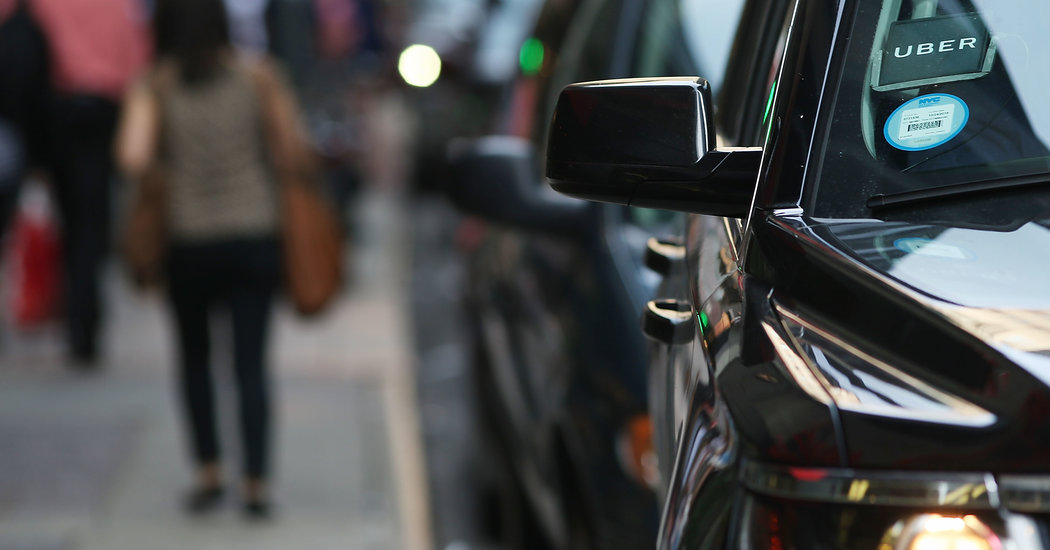Cade: Yes, I am the first A.I. reporter ever at The Times. I’m a bot trained from reams of data detailing the behavior of some Silicon Valley hack during his five years at Wired magazine, incluing al thos typos. So when I insult you and Farhad on Twitter, don’t take it personally. That’s just the way I was built.
O.K., that’s not true. I’m not a bot. I’m just some hack who covers A.I. The truth is: A.I. is a long way from mimicking the behavior of a Times reporter. I hope.
Mike: Elon Musk was right. We are all doomed.
Farhad: Great, let’s chat about tech news. So the big thing this week was Uber, more Uber and still more Uber, with a little bit of Amazon and Whole Foods thrown in. But we’ll get to all that in a bit. Let’s start with other stuff.
Facebook said that it would begin to explain to the public how it tackles “hard questions” that arise out of its service — things like how Facebook affects democracies, or whether and how kids should use it. In its first such effort, the company detailed how it’s using artificial intelligence to fight the spread of terrorists online.
I have to say, I was really impressed with this whole exercise. I think tech companies have long been too reluctant to talk about the potential dangers of their technology. It’s great that Facebook — after, of course, a lot of questions and prodding arising out of its role in the election — is taking these issues seriously. But Cade, you’re our resident A.I. expert, so could you explain what exactly Facebook is doing, and whether it’ll work?
Cade: Well, the people who wrote that blog post are policy folks, not engineers. They’re using the term A.I. in the broadest of ways (like so many people these days). In most cases, they use A.I. to mean technology, as opposed to human involvement.
Some of the stuff they talk about, like identifying an image known to be related to terrorism, will work well. But other stuff, like the experimental system that seeks to identify online conversation and other natural language that points to terrorism, won’t work really well for years. (Hint: experimental is a key word). That kind of thing requires A.I. that is still very much under development.
The other key bit is where they say: “A.I. can’t catch everything.” That’s an understatement. When it comes to catching unwanted behavior on Facebook— whether it’s someone planning an act of terrorism or spreading fake news — Zuckerberg and company still need help from real live humans who see this stuff as it happens. That means Facebook users who can flag questionable content with a click, and it means the many contractors hired to review what has been flagged and remove what needs to be removed. This is stuff is very hard, and it will continue to be very hard until A.I. gets a lot better.
All that said, I agree with you, Farhad. Hard stuff should be taken seriously.
Farhad: This week, Silicon Valley also celebrated the life of Charles Thacker. Cade, you’re a kind of Valley historian, aren’t you? What can you tell us about Thacker?
Cade: If you use a computer or a smartphone or the internet, you should read our obituary of Thacker. He is one of just a handful of people who designed the fundamental technologies that drive everything we do online.
In Thacker’s case, he was among the researchers at Xerox’s Palo Alto Research Lab in the 1970s who built the Alto, the machine with the graphical user interface that spawned the Macs and the PCs and, eventually, the smartphones that are such a big part of our everyday lives. Plus, he helped design Ethernet, the networking technology that linked the Altos together — and now links all the machines in your office, not to mention the thousands of machines inside the giant data centers that feed all the internet apps you use.
Think of it like this: When Steve Jobs died, he deserved avalanche of tributes that arrived from across the globe, and Thacker deserves much the same.
Farhad: Now let’s get to Uber. Months after a former employee, Susan Fowler, detailed incidents of sexual harassment and rampant misogyny at the company, the company announced a huge set of reforms to its culture and workplace practices. Also, Travis Kalanick, the C.E.O. and basically the embodiment of Uber, said he would be taking a leave of absence.
These are huge changes. I’m not sure if people who don’t follow the tech industry get this — a few months ago, it was unimaginable that Kalanick, who has overwhelming control of the company, could ever be pressured to step away. And if Uber actually follows through on its plan to remake its culture, it will operate like a completely different company.
But that’s what makes me so skeptical of this plan. Can a $70 billion company really change so radically?
Mike: My official assessment: I have no clue.
To be honest, a lot of this seems to hinge on the personality of Travis, who is famously aggressive and obsessive. And while he’s said he’s taking time off right now, I do wonder whether that will hold true — especially since Uber is undergoing its most prolonged set of crises, um, ever.
I think companywide DNA, instilled and fostered by the founders, is seriously difficult to change. Just ask Twitter.
That said, we should give Uber a chance — just like it is giving peace a chance! — and see what the company looks like six months to a year from now.
Cade: However all this shakes out, one thing is clear: Uber will continue to dominate the ride-hailing market for years to come. Its lead is just too big. But the slightly more distant future is driverless cars, and the scandals — among other things — have really hurt the company’s effort to make headway in this area. The question for me is whether Uber can still compete in this race to A.I. But, well, I’m an A.I. reporter.
Mike: Indeed you are, robot Cade. And now to get as far away from A.I. as possible — what do you think of Amazon’s purchase of Whole Foods?
Cade: Actually there is an A.I. angle. As we point out in our piece about Amazon’s deal to acquire Whole Foods, this is part of a major pivot into brick-and-mortar stores. Among other things, Amazon is experimenting with systems that will let you automatically pay for your groceries as you walk out of a store with them — A.I. is everywhere! And somewhere down the line, Whole Foods can feed those efforts to streamline the way we buy stuff in person. But this can also feed the company’s larger mission to sell stuff online.
What Amazon is good at is building enormous supply chains and physical infrastructure (warehouses, trucks, planes, even drones) that provide ways of delivering goods to your door much quicker than competitors can. By the same token, Whole Foods puts more Amazon groceries closer to you. Those stores aren’t just stores. They’re part of the supply chain.
Mike: This Whole Foods talk is making me hungry. Thanks for joining us, Cade. Until next week.
By FARHAD MANJOO, MIKE ISAAC and CADE METZ
https://www.nytimes.com/2017/06/17/technology/farhads-mikes-and-cades-week-in-tech-more-uber-with-a-dash-of-amazon.html
Source link


